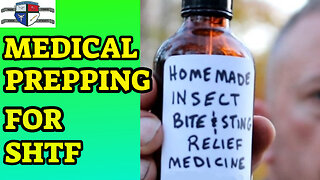10 Peppers Every Spice Lover Needs to Eat at Least Once. #foodie #food #cooking #pepper
10 Peppers Every Spice Lover Needs to Eat at Least Once.
A list of peppers can only scratch the surface. There are over 50,000 different varieties available, and pepper enthusiasts are breeding new ones all the time. Peppers are spicy because they contain capsaicin; the higher the concentration of capsaicin, the hotter your pepper is.
In 1912, an American pharmacist, Wilbur Scoville, came up with a way to measure the heat of a pepper. The Scoville scale is still used today; a low Scoville number means that your pepper is mild, and a high number means that your pepper packs a punch.
Number Ten: The Carolina Reaper
The Carolina Reaper was developed by “Smokin” Ed Currie in South Carolina. In 2017, Guinness World Records recognized this monster as the hottest chili pepper in the world. People who have been brave enough to try it say it first seems mild and then whack! Your mouth is on fire. A jalapeño pepper can reach 8,000 Scoville Heat Units (SHU)—the Carolina Reaper reaches more than 1,500,000 SHU, with one sample measuring 2,200,000. A grower in Britain has claimed that he has bred a hotter pepper; Smokin Ed has countered that he has, too—we will wait to see who reigns the hottest!
After eating a Reaper, you might feel that the world is ending, but there’s no evidence that they are dangerous to your health. Just don’t rub your eyes after handling one.
Number Nine: Paprika Pepper.
Paprika is the Hungarian word for pepper and is a staple ingredient in many Hungarian dishes. The Hungarians recognize eight classes of paprika, ranging from very mild to hot. But paprika is not native to Hungary; it originated in Mexico.
Generally, paprika is a mild pepper that measures 250 to 1,000 SHU. You’re probably familiar with it as a dry spice powder. Cooks will often use the mildest paprika power simply as a coloring. This is a shame as paprika has a unique taste that can add a lot to various dishes.
Try paprika in soups or stews. It goes well with beef, chicken, and pork and can add a little zest to any vegetarian dish. You could also use paprika to rub into meat before barbecuing.
Number Eight: Jalapeno Peppers.
Jalapenos can measure anywhere between 2,500 and 8,000 SHU. In Spanish, the name means “from Xalapa”—the capital city of Veracruz in Mexico. It’s now grown in various areas around the world and does well in the western and southwestern states of the U.S., among other places in the world.
You can grow jalapeños at home from seed, but it’s best not to use seeds from green peppers as these are not mature. Give your jalapeños plenty of soil, and make sure your pot is well-drained. You should soon have a crop of smooth, firm jalapenos 2-4 inches long.
Try jalapenos in macaroni cheese—they really make a difference in this family favorite.
Number Seven: Cayenne Peppers.
The aptly-named English botanist mentioned Cayenne pepper in 1652, so we’ve known about them for a long time. You can find powdered Cayenne in most stores, but the name is sometimes used as a generic term for hot pepper, and some brands may contain a mixture of true Cayenne and other peppers. Cayenne rates 30,000 to 50,000 SHU, so it is quite hot.
There are various varieties of Cayenne, and they are easy to grow at home. You can use them fresh or dried. Cayenne is a common ingredient in various well-known commercial sauces—the excellent Original Louisiana Hot Sauce is one, but you can make your own sauce, too.
.
Number Six: Scotch Bonnet.
This very hot pepper is not for the faint-hearted. With a Scoville rating between 100,000 and 350,000, even the mildest Scotch Bonnet packs a punch. The name comes from the pepper’s supposed resemblance to a traditional Scottish tam o’ shanter cap.
The Scotch Bonnet pepper is widely used in Caribbean cuisine and is responsible for the zing in jerk dishes with pork or chicken. But you can use Scotch Bonnets in any dish.
Number Five: Shishito Peppers.
Shishito peppers come from East Asia and have a mild rating of 50 to 200 SHU. One or two are a lot spicier than the others in a bunch of twenty Shishito peppers. In this way, they are very similar to Padron peppers, a Spanish cuisine favorite. Shishitos are about as long as your finger.
The best way to prepare Shishito peppers is to fry them in oil. Pop a hole in the peppers first to allow the expanding air inside to escape as they cook.
Number Four: Hatch Green Chile.
The small town of Hatch in New Mexico proudly calls itself the “Chile Capital of the World.” And, if you are a fan of chile, Hatch should be on your bucket list of places to visit. Every year, on Labor Day weekend, the 2,000 inhabitants of Hatch celebrate the Hatch Chile Festival, but you can visit anytime to discover a town that lives for and loves chiles. Hatch, with its dedicated shops and restaurants, is on Interstate 25, about 40 miles north of Las Cruces.
-
 0:15
0:15
Thoughts TV
3 months agoBeautiful Nigerian lady dancing video
61 -
 1:52:46
1:52:46
Game On!
18 hours agoBoston Celtics Can't Win Game 2! | Sports Morning Espresso Shot
41.8K33 -
 1:00:01
1:00:01
Trumpet Daily
1 day agoMarxist Left Continues to Imprison Trump’s Inner Circle - Trumpet Daily | June 7, 2024
38.1K58 -
 LIVE
LIVE
The Amber May Show
11 hours agoReAwaken America Tour Detroit, MI - DAY 2 | Join General Flynn, Eric Trump, Kash Patel, Mayor Giuliani & Team America + Request Tickets for October 18-19 Selma, NC At: TimeToFreeAmerica.com
1,484 watching -
 12:23
12:23
Freakin' Reviews
1 day agoRice Robot Review: One-Touch Rice Cooker? | As Seen on TV
73.8K30 -
 5:45
5:45
Game Developer
1 day agoHow To Become A Game Dev (While Working A Full Time Job)
67.4K15 -
 4:16
4:16
ryanhoguepassiveincome
1 day agoElevate Amazon Ads brand content with your Brand Store
67.1K6 -
 16:19
16:19
RealReaper
1 day agoThe Acolyte Is Unwatchable
60.4K53 -
 11:29
11:29
Ethical Preparedness
21 hours ago2 EASY Ways: Make Insect Bite & Sting Medicine - Medical Prepping for SHTF - Natural Medicine
66.9K13 -
 15:52
15:52
JoBlo Horror Originals
1 day agoThe Watchers Review: Shyamalans Sure Do Love Their Twists
65.7K6